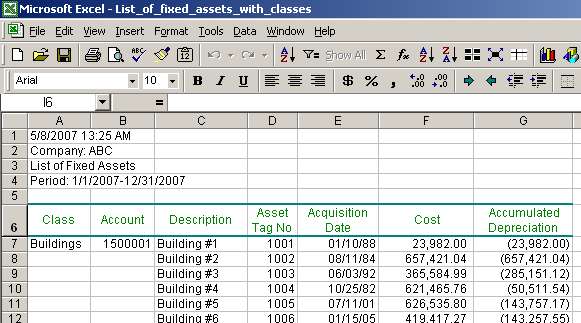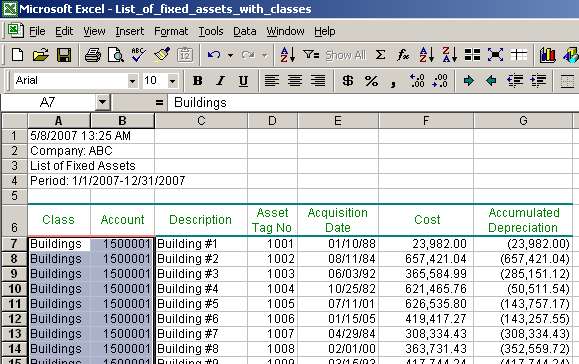Excel Fill Down Function, Excel Fill Down Examples
This Excel lecture explains how to fill down values in cells using Excel IF function. This technique will be useful if you need to fill in values in columns and such values change on different rows.
The lecture will be helpful to anybody who works with files coming from accounting applications. For example, you may export a list of receivables or fixed assets from your accounting software into an Excel file. When you export data from your system into Excel, it may have a format as shown below:

Note that cells A7 and B7 contain asset class and account information. Cells underneath don't have any values. If you want to use this file for building pivot tables, creating VLOOKUP or SUMIF functions, all cells in columns A and B need to be filled with respective class and account values.
One way to accomplish that is to copy and paste values from cells A7 and B7. However, if we are talking about tens or hundreds of fixed asset classes and accounts, then using this technique is not effective. In this case, using IF function may speed up the process and help fill in empty cells with respective values faster.
Note that this lecture is applicable only if your system cannot populate all cells for you. In case your system exports data in a format similar to one shown below, then you don't have to do anything further:

Unfortunately, some accounting applications are not so nice to populate all required cells. In this case, you can use the IF function to complete this task.
The company name and numbers in this lecture are not real and no association with a real company with a similar name, if such exists, should be made.
Page 1 of 6